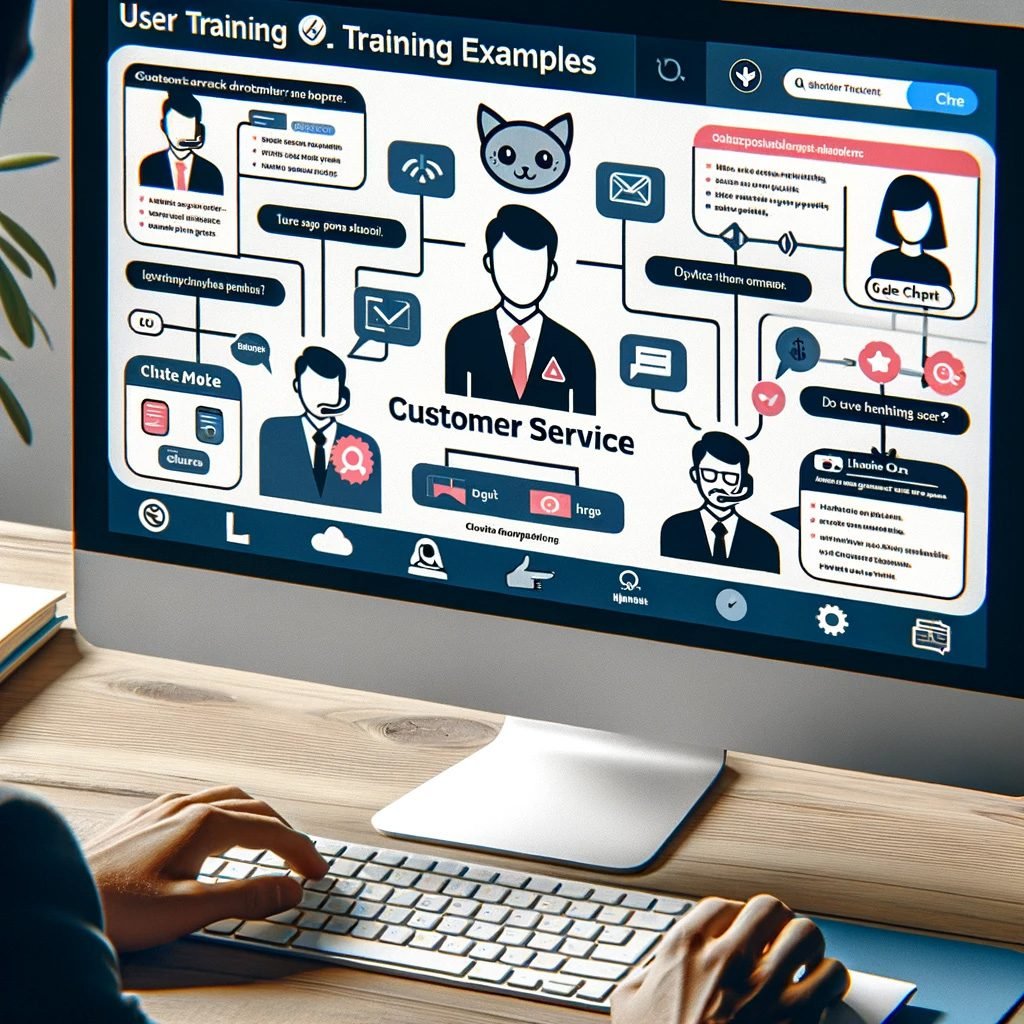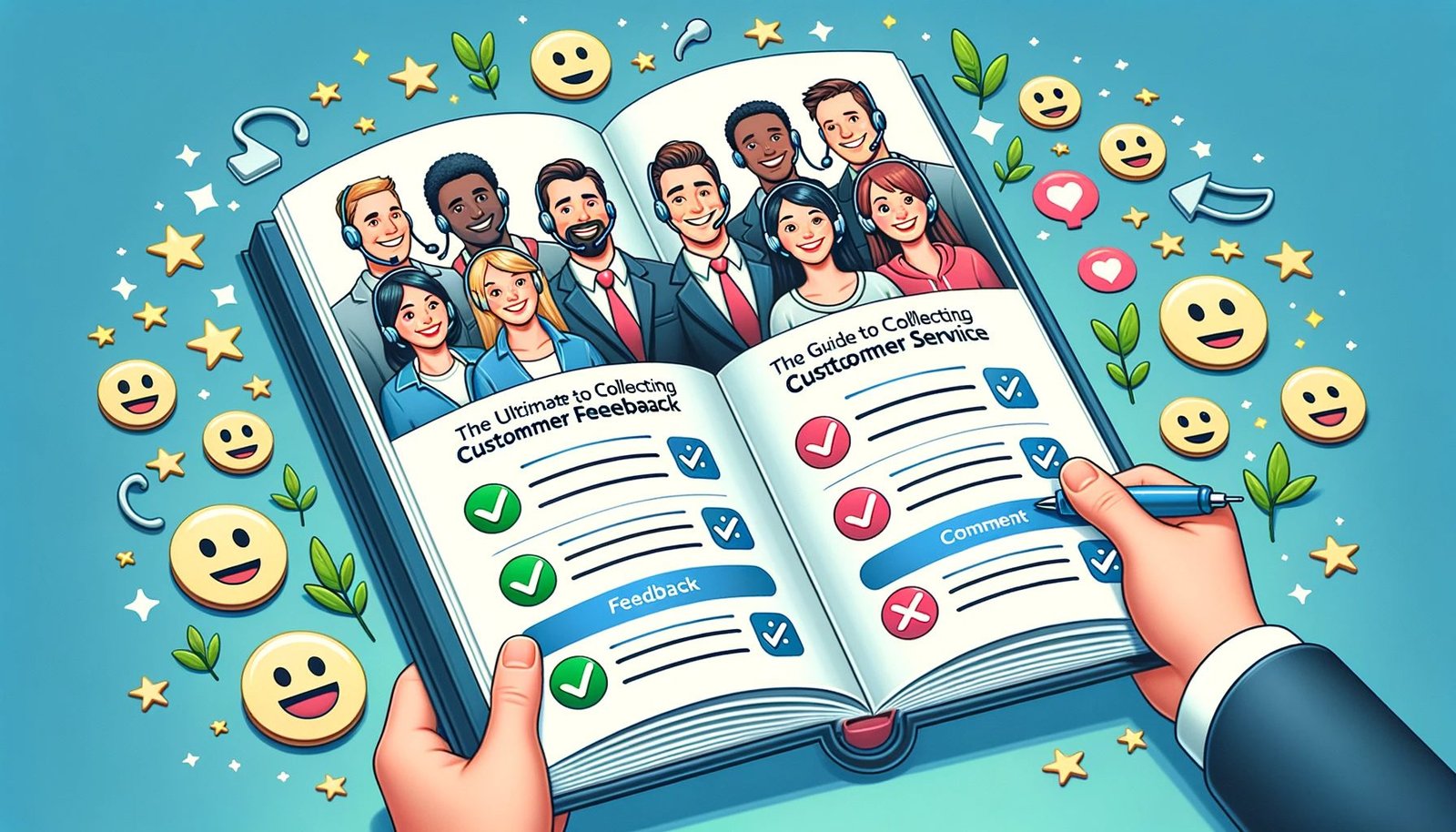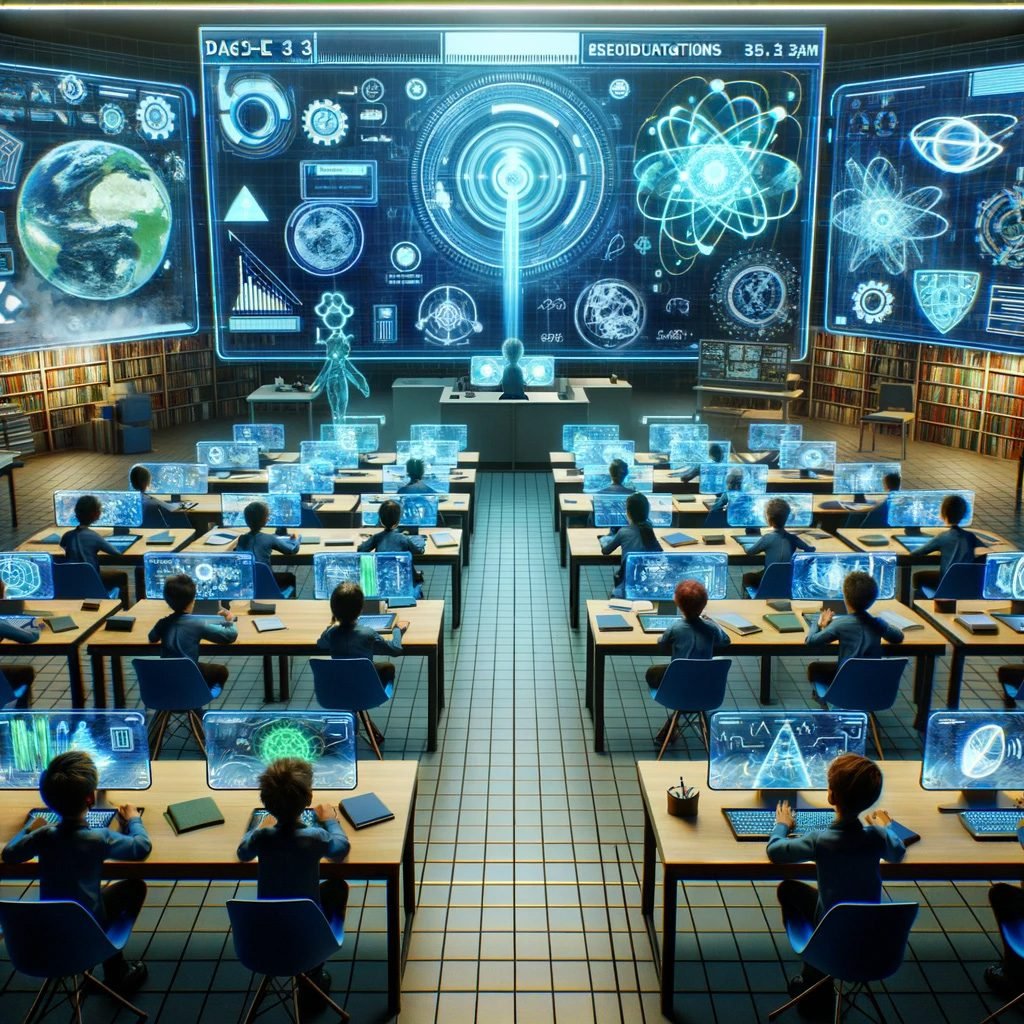How to Train a ChatGPT Chatbot to Be a Customer Service Problem Solver
How to Train a ChatGPT Chatbot to Be a Customer Service Problem Solver
Introduction – How to Train a ChatGPT Chatbot to Be a Customer Service
In the rapidly evolving world of digital customer service, businesses are constantly seeking ways to enhance user experience and satisfaction. The emergence of AI and machine learning has paved the way for chatbots to become a staple in this domain. ChatGPT, with its advanced capabilities, stands at the forefront of this revolution. However, while technology offers efficiency and scalability, the essence of human touch remains paramount.
The rise of AI in customer service
The integration of AI in customer service has transformed the way businesses interact with their clientele. Gone are the days of prolonged wait times and tedious interactions. With tools like ChatGPT, customers can now receive instant, accurate, and personalized responses. Whether it’s navigating through WordPress Construction Websites or seeking information on Shopify E-commerce Website Development, AI-driven solutions are enhancing user experience like never before.
A recent survey suggests that by 2025, over 80% of customer interactions will be managed without a human. This shift towards AI-centric support isn’t just a fleeting trend; it’s setting the stage for the future of customer service.
The potential of ChatGPT when trained effectively for customer service
While the capabilities of AI are vast, the true potential of tools like ChatGPT is realized when they are trained effectively. A well-trained ChatGPT doesn’t just respond; it understands, empathizes, and offers solutions. It can handle a plethora of queries, troubleshoot issues, and even predict customer needs.
However, the essence of customer service lies in understanding and empathy – traits inherently human. This is where the balance between AI efficiency and the human touch becomes crucial. By harnessing the capabilities of ChatGPT and aligning them with human empathy, businesses can offer a support system that’s not just efficient but also deeply resonant.
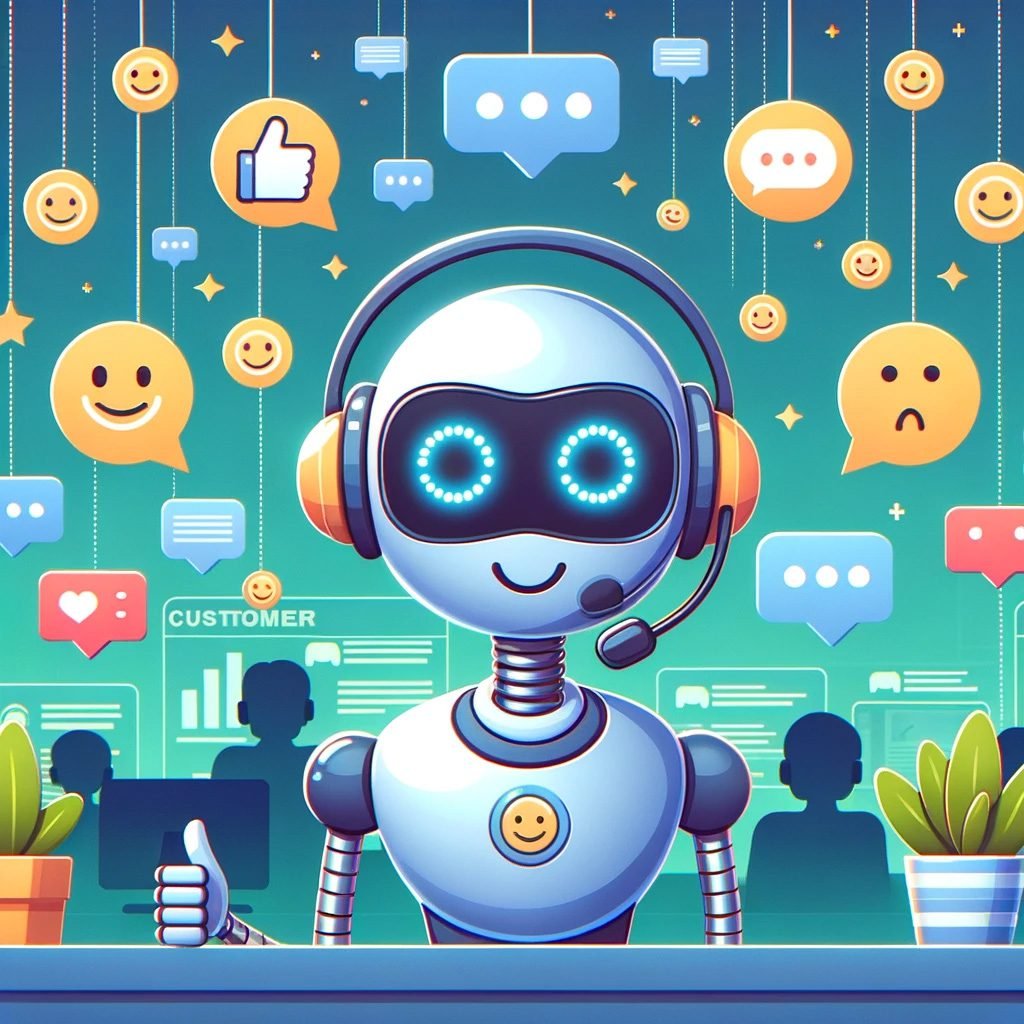
The Secret to Training a ChatGPT Chatbot
In the realm of AI-driven customer service, ChatGPT stands out as a revolutionary tool. Its ability to understand and generate human-like text makes it a game-changer for businesses aiming to enhance their customer support. But like any tool, its effectiveness hinges on how well it’s trained. Let’s delve into the intricacies of training ChatGPT to be a customer service superstar.
a. Understanding ChatGPT’s Capabilities: What makes it unique.
ChatGPT, developed by OpenAI, is not your average chatbot. It’s built on a state-of-the-art language model that can generate coherent and contextually relevant sentences. This capability allows it to engage in meaningful conversations with users, making it feel less like a bot and more like a human.
Some of ChatGPT’s standout features include:
- Contextual Understanding: Unlike many chatbots that rely on predefined scripts, ChatGPT can understand the context of a conversation and respond accordingly.
- Adaptive Learning: With the right training, ChatGPT can adapt to specific industries, customer queries, and even the tone of a business.
- Multitasking Abilities: From answering queries to troubleshooting issues, ChatGPT can handle a range of tasks simultaneously.
However, while ChatGPT is powerful, it’s essential to recognize its limitations. It doesn’t inherently know your business’s specifics or the nuances of your customer base. That’s where training comes into play.
b. Setting Clear Objectives: Defining what you want to achieve with ChatGPT in customer service.
Before diving into the training process, it’s crucial to set clear objectives. What do you want ChatGPT to achieve for your customer service?
- First Response Resolution: Do you want ChatGPT to resolve most queries on the first interaction? If so, it needs to be trained on a comprehensive database of FAQs and solutions related to your business.
- Lead Generation: If you’re using ChatGPT to generate leads, it should be trained to identify potential customers and guide them through the sales funnel.
- Feedback Collection: ChatGPT can be an invaluable tool for collecting customer feedback. Ensure it’s trained to ask the right questions and store feedback efficiently.
- Escalation to Human Agents: In situations where human intervention is required, ChatGPT should recognize this and seamlessly transfer the query to a human agent.
By setting clear objectives, you can tailor your training approach to ensure ChatGPT aligns with your business goals. Remember, the key lies in continuous training and refinement based on real-world interactions and feedback.
Incorporating tools like WordPress web development for customer service or utilizing platforms like Fiverr can further enhance the training process, making ChatGPT a formidable asset in your customer service arsenal.
Your Ultimate Guide to Training a ChatGPT Chatbot
In the ever-evolving world of AI and customer service, ChatGPT emerges as a frontrunner. Its prowess in understanding and generating human-like text has made it a favorite among businesses. However, the real magic lies in how it’s trained. A well-trained ChatGPT can transform your customer service experience, while a poorly trained one can lead to customer dissatisfaction. Let’s dive into the steps to ensure your ChatGPT is at the top of its game.
a. Data Collection: Gathering relevant customer interactions.
Data is the backbone of any AI system. For ChatGPT to be effective in customer service, it needs to be fed with relevant data.
- Historical Interactions: Start by collecting chat logs and customer interactions from your existing support channels. This provides ChatGPT with a foundation to understand the common queries and issues faced by your customers.
- Diverse Data Sources: Don’t limit yourself to just chat logs. Emails, support tickets, and even social media interactions can offer valuable insights.
- Quality Over Quantity: While it’s tempting to feed ChatGPT with vast amounts of data, focus on relevance. Ensure the data is clean, relevant, and free from biases.
Utilizing platforms like WordPress for customer data management can streamline this process, ensuring you have quality data at your fingertips.
b. Fine-Tuning the Model: Adapting ChatGPT to your specific customer service needs.
Once you have the data, the next step is fine-tuning.
- Custom Responses: Train ChatGPT to respond in a manner that aligns with your brand’s voice and tone. Whether you want it to be formal, casual, or somewhere in between, this step ensures consistency across all customer interactions.
- Scenario-Based Training: Create specific scenarios based on real-world interactions. This helps ChatGPT understand the nuances and complexities of customer queries.
- Integration with CRM: Integrate ChatGPT with your CRM system. This allows it to access customer history, making its responses more personalized and relevant.
Tools like Fiverr offer services that can assist in this fine-tuning process, ensuring your ChatGPT is tailored to your business needs.
c. Continuous Learning: Keeping ChatGPT updated with the latest customer feedback.
The world of customer service is dynamic. What works today might not work tomorrow. Hence, continuous learning is crucial.
- Feedback Loop: Implement a system where customer feedback on ChatGPT interactions is regularly collected and analyzed.
- Regular Updates: Based on feedback and changing business needs, regularly update and train ChatGPT.
- Stay Updated with Trends: AI and customer service trends evolve. Stay updated and ensure your ChatGPT training aligns with the latest best practices.
Incorporating WordPress web development for feedback collection can be a game-changer, ensuring you always have your finger on the pulse of customer needs.
Training ChatGPT for customer service is not a one-time task. It’s a continuous process of data collection, fine-tuning, and learning. With the right approach, ChatGPT can become an invaluable asset, elevating your customer service to new heights.
10 Tips for Training a ChatGPT Chatbot
The potential of ChatGPT in customer service is immense. However, the key to unlocking this potential lies in effective training. A well-trained ChatGPT can handle a myriad of customer queries, ensuring satisfaction and loyalty. Here are ten tips to ensure your ChatGPT is at the top of its game:
a. Real-world Scenarios: Using actual customer interactions for training.
Real customer interactions provide invaluable insights. By feeding ChatGPT with actual chat logs and queries, you give it a foundation to understand common issues and how best to address them. Platforms like WordPress for customer data management can be instrumental in gathering and organizing this data.
b. Role-playing Simulations: Creating hypothetical customer service situations.
Simulate various scenarios, from common queries to complex issues. This role-playing approach prepares ChatGPT for a wide range of customer interactions, ensuring it’s ready for anything.
c. Feedback Loops: Refining ChatGPT based on its performance.
Implement a system where customer feedback on ChatGPT interactions is regularly collected. Analyze this feedback and use it to refine and improve ChatGPT’s responses. Tools like Fiverr can assist in setting up these feedback mechanisms.
d. Personalization: Teaching ChatGPT to tailor responses.
Customers appreciate personalized interactions. Train ChatGPT to access customer history and tailor its responses accordingly, ensuring a more personalized and relevant interaction.
e. Handling Difficult Situations: Preparing ChatGPT for challenging customer interactions.
Not all customer interactions are straightforward. Some can be challenging and require tact. Train ChatGPT to recognize these situations and respond with empathy and understanding.
f. Multitasking: Training ChatGPT to handle multiple queries simultaneously.
Customers appreciate quick responses. Equip ChatGPT with the capability to handle multiple queries at once, ensuring customers aren’t left waiting.
g. Product Knowledge: Ensuring ChatGPT knows your products/services inside out.
Feed ChatGPT with detailed information about your products or services. The better it understands what you offer, the better it can assist customers.
h. Emotional Intelligence: Teaching ChatGPT to recognize and respond to emotions.
While ChatGPT can’t “feel” emotions, it can be trained to recognize them. Equip it with the ability to detect customer emotions based on their text and respond empathetically.
i. Escalation Protocols: Knowing when to hand off to a human agent.
Despite its capabilities, there will be times when ChatGPT needs to escalate an issue to a human agent. Train it to recognize these situations and ensure a seamless handoff.
j. Continuous Updates: Keeping ChatGPT informed about company changes and updates.
Businesses evolve, and so should ChatGPT. Regularly update it with any company changes, new products, or services to ensure it always provides accurate information.
Incorporating these tips into your ChatGPT training regimen will ensure a more effective, efficient, and customer-friendly chatbot. Remember, the goal is not to replace human agents but to complement them, ensuring customers always receive the best support possible.

ChatGPT as a Customer Service Problem Solver
In the realm of customer service, swift and effective problem-solving is paramount. With the integration of AI-driven platforms like ChatGPT, businesses have a powerful tool at their disposal. When trained effectively, ChatGPT can act as a formidable problem solver, addressing customer concerns with precision and speed. Let’s delve deeper into how ChatGPT can be harnessed as a customer service problem solver:
a. Advanced Problem-Solving Techniques: Equipping ChatGPT with solutions.
To transform ChatGPT into a proficient problem solver, it’s essential to equip it with advanced problem-solving techniques. Here’s how:
- Knowledge Base Integration: Link ChatGPT to your company’s knowledge base. This allows the chatbot to pull relevant information and solutions in real-time. Platforms like WordPress for knowledge base management can be invaluable in this regard.
- Scenario Mapping: Feed ChatGPT with various problem scenarios and their respective solutions. This helps the chatbot recognize patterns and offer solutions swiftly.
- Predictive Analysis: By analyzing past interactions, ChatGPT can predict potential issues a customer might face and proactively offer solutions. This not only solves problems but can also prevent them from arising in the first place.
- Integration with Other Tools: Combine ChatGPT’s capabilities with other tools, such as CRM systems or e-commerce platforms like Shopify, to provide holistic solutions. For instance, if a customer faces an issue with an order, ChatGPT can pull order details and offer real-time solutions.
b. Case Studies: Real-world examples of ChatGPT resolving customer issues.
Case Study 1: E-commerce Returns A customer approached an e-commerce platform’s chat support, powered by ChatGPT, expressing dissatisfaction with a product they received. ChatGPT, having been trained with return and exchange protocols, instantly provided the customer with a return label and initiated the return process. The customer was pleased with the swift resolution, turning a potentially negative experience into a positive one.
Case Study 2: Tech Troubleshooting A user faced issues with a software application and reached out to the company’s ChatGPT-powered support. The chatbot, having been fed with common troubleshooting steps, guided the user through a series of actions. Within minutes, the user’s issue was resolved, eliminating the need for a lengthy back-and-forth or escalation to a human agent.
Case Study 3: Booking Amendments A customer wanted to change their hotel booking dates on a travel website. ChatGPT, integrated with the website’s booking system, instantly processed the date change, confirmed the new dates with the customer, and sent an updated booking confirmation. The seamless experience enhanced the customer’s trust in the platform.
ChatGPT, when trained and integrated effectively, can act as a formidable problem solver in the customer service domain. By equipping it with the right tools, knowledge, and real-world scenarios, businesses can ensure that customers receive swift and effective solutions, enhancing overall satisfaction and loyalty.
A Step-by-Step Guide to Exceeding Expectations
In the dynamic world of customer service, merely meeting expectations is no longer enough. To truly stand out and foster loyalty, businesses must aim to exceed these expectations consistently. With the integration of AI-driven platforms like ChatGPT, this lofty goal becomes achievable. But how can one ensure that ChatGPT not only meets but surpasses customer expectations? Let’s embark on a step-by-step journey to unlock the full potential of ChatGPT in the realm of customer service:
a. Setting Up Your ChatGPT: Initial steps and requirements.
1. Define Your Objectives: Before diving into the setup, clearly define what you aim to achieve with ChatGPT. Whether it’s handling routine queries, assisting with WordPress web development troubleshooting, or guiding users through a Shopify e-commerce platform, having clear objectives will guide the setup process.
2. Choose the Right Platform: While ChatGPT is a powerful tool, its effectiveness can be amplified when integrated with the right platform. Platforms like Rizve Joarder’s web development services offer seamless integration options.
3. Initial Data Feed: Feed ChatGPT with a rich dataset comprising FAQs, common customer queries, and standard responses. This forms the foundation upon which ChatGPT will operate.
4. Integration with Other Systems: Ensure ChatGPT is integrated with other essential systems, be it your CRM, booking system, or e-commerce backend. This allows for a holistic customer service experience.
b. Iterative Training: The cycle of training, feedback, and refinement.
1. Real-world Interaction Analysis: Regularly analyze the interactions ChatGPT has with customers. Extract insights on where it excels and where it falls short.
2. Feedback Collection: Use tools like feedback forms or direct customer surveys to gather feedback specifically about their interaction with ChatGPT.
3. Refinement Based on Feedback: Use the feedback to refine ChatGPT’s responses. For instance, if customers felt that ChatGPT’s responses in a particular scenario were too robotic, infuse a more human touch.
4. Regular Updates: The world of customer service is ever-evolving. Regularly update ChatGPT with new information, be it about new products, policies, or market trends.
c. Measuring Success: Tools and metrics to gauge ChatGPT’s effectiveness.
2. Resolution Time: Measure the average time ChatGPT takes to resolve queries. A significant reduction in resolution time often indicates effectiveness.
3. Escalation Rate: Monitor how often interactions need to be escalated from ChatGPT to a human agent. A lower rate indicates that ChatGPT is effectively resolving issues.
4. Engagement Metrics: Analyze metrics like interaction duration, repeat interactions, and engagement depth to understand how customers are interacting with ChatGPT.
5. Continuous Monitoring with Tools: Platforms like Rizve Joarder’s web development services offer tools that can help monitor and analyze ChatGPT’s performance in real-time.
By meticulously setting up, training, and measuring ChatGPT’s performance, businesses can ensure that they not only meet but consistently exceed customer expectations. The key lies in continuous refinement and staying attuned to customer feedback.
Training ChatGPT to Be an Empath
In the realm of customer service, while accuracy and efficiency are paramount, the significance of empathy cannot be understated. As businesses increasingly rely on AI-driven platforms like ChatGPT to interact with customers, the challenge lies in ensuring these interactions don’t come off as cold and robotic. Let’s delve into the importance of empathy in customer service and explore how we can train ChatGPT to be more emotionally attuned.
a. The Importance of Empathy in Customer Service: Why it matters.
1. Building Trust: Empathetic interactions foster trust between the customer and the brand. When customers feel understood, they’re more likely to trust the brand’s solutions and recommendations.
2. Enhancing Customer Loyalty: Customers are more likely to return to brands that make them feel valued and heard. Empathy plays a pivotal role in creating such memorable customer experiences.
3. Reducing Customer Churn: Negative experiences, especially those devoid of empathy, can push customers away. By ensuring empathetic interactions, businesses can reduce the chances of customers switching to competitors.
4. Positive Brand Image: In the age of social media, customers often share their experiences online. Empathetic interactions can lead to positive word-of-mouth, bolstering the brand’s image.
b. Techniques and Tools: Making ChatGPT more emotionally intelligent.
1. Sentiment Analysis: Equip ChatGPT with sentiment analysis tools. This allows the chatbot to gauge the emotional tone of the customer’s messages and respond accordingly. For instance, if a customer’s message indicates frustration, ChatGPT can respond with more soothing and understanding language.
2. Personalized Responses: Train ChatGPT to offer personalized responses based on user history. For example, recognizing a customer’s previous interactions or purchases can allow ChatGPT to make the customer feel remembered and valued.
3. Role-playing Simulations: Use hypothetical scenarios where ChatGPT interacts with customers displaying a range of emotions. This helps in refining its responses to be more empathetic.
4. Feedback Loops: Regularly collect feedback on ChatGPT’s interactions, especially focusing on its empathetic quotient. Use this feedback for continuous refinement.
5. Integration with CRM Solutions: By integrating with CRM platforms, ChatGPT can have access to more detailed customer profiles, allowing for more empathetic and tailored interactions.
6. Continuous Training with Real-world Scenarios: Regularly update ChatGPT’s training data with real-world customer interactions, especially those where empathy played a crucial role. This helps ChatGPT understand and mimic empathetic responses more effectively.
While ChatGPT and similar AI-driven platforms offer efficiency and scalability, infusing them with empathy is crucial for holistic customer service. With the right training and tools, ChatGPT can be transformed from a mere chatbot to an empathetic customer service companion.
Unlocking Your Chatbot’s Potential for Excellence
In the rapidly evolving world of AI-driven customer service, merely having a chatbot is no longer enough. To truly stand out and offer unparalleled customer experiences, businesses must unlock the full potential of their chatbots. This involves advanced training techniques and a harmonious blend of AI capabilities with human insights. Let’s delve deeper into how businesses can achieve this excellence with their ChatGPT chatbots.
a. Advanced Training Techniques: Going beyond the basics.
1. Reinforcement Learning: Instead of just relying on predefined datasets, use reinforcement learning where ChatGPT learns from real-time interactions. By receiving feedback after each interaction, it can continuously refine its responses.
2. Contextual Understanding: Train ChatGPT to understand the context behind queries. This involves recognizing the nuances and subtleties of conversations, allowing for more accurate and relevant responses.
3. Multimodal Training: Incorporate various data types, like text, voice, and even video, to train ChatGPT. This multi-faceted approach ensures the chatbot is well-equipped to handle diverse customer interactions.
4. Hyperparameter Tuning: Dive deep into the technical aspects by fine-tuning the hyperparameters of ChatGPT. This can significantly enhance its performance and accuracy.
5. Incorporate WordPress web development best practices: Ensure that the chatbot is seamlessly integrated into your website, offering smooth interactions and quick load times.
b. AI and Human Collaboration: The synergy of combining AI with human insights.
1. Hybrid Support Model: Instead of viewing AI and human agents as separate entities, adopt a hybrid model. Here, ChatGPT handles routine queries, while more complex or sensitive issues are escalated to human agents.
2. Feedback Mechanisms: Allow human agents to provide feedback on ChatGPT’s responses. This continuous feedback loop ensures that the chatbot learns from human expertise.
3. Role-playing Simulations: Conduct sessions where human agents play the role of customers, interacting with ChatGPT. This provides invaluable insights into areas of improvement.
4. Collaborative Training Datasets: Create training datasets in collaboration with human agents, ensuring that ChatGPT is equipped with real-world knowledge and expertise.
5. Emotion Recognition: While ChatGPT can be trained to recognize textual cues, human agents can provide insights into emotional undertones, helping the chatbot respond with empathy.
The path to chatbot excellence lies in continuous refinement and a collaborative approach. By harnessing advanced training techniques and fostering a synergy between AI and human insights, businesses can ensure their ChatGPT chatbot stands out as a beacon of customer service excellence.
How to Make Your ChatGPT a Customer Service Hero
In the age of digital transformation, where AI-driven solutions like ChatGPT are revolutionizing customer service, businesses have a golden opportunity. They can transform their ChatGPT chatbot from a mere digital assistant to a customer service hero. This not only enhances the customer experience but also positions the brand as forward-thinking and customer-centric. Let’s explore how businesses can achieve this transformation.
a. Celebrating Successes: Highlighting standout customer service moments.
1. Showcase Testimonials: Regularly collect and showcase positive feedback from customers who had exceptional interactions with ChatGPT. This not only boosts the chatbot’s credibility but also instills confidence in users.
2. Share Success Stories: Dedicate a section on your business website to highlight instances where ChatGPT went above and beyond to assist customers. This could include resolving complex queries or providing instant solutions during peak hours.
3. Social Media Highlights: Use platforms like Twitter, Facebook, and Instagram to share snippets of positive interactions. This not only promotes ChatGPT’s capabilities but also engages a wider audience.
4. Awards and Recognitions: If your ChatGPT chatbot has received any awards or recognitions for its service, flaunt them. This could be in the form of badges on your website or mentions in press releases.
5. Customer-Centric Metrics: Regularly share metrics that highlight ChatGPT’s customer-centric performance, such as high satisfaction rates, reduced wait times, or the number of queries resolved instantly.
b. Continuous Improvement: Always striving for better.
1. Regular Training: The world of customer service is ever-evolving. Regularly update and train ChatGPT with new information, ensuring it’s always equipped with the latest knowledge.
2. Feedback Collection: Use tools like Fiverr to gather feedback on ChatGPT’s performance. Understand where it shines and where it needs improvement.
3. A/B Testing: Experiment with different response scripts or strategies. Analyze which ones resonate better with customers and implement them.
4. Integration with Other Tools: Ensure that ChatGPT is integrated with other customer service tools. This could include CRM systems, knowledge bases, or even e-commerce platforms.
5. Stay Updated with Trends: The AI and chatbot industry is rapidly evolving. Stay updated with the latest trends, technologies, and best practices. Implement relevant ones to ensure ChatGPT remains a frontrunner in customer service.
Transforming ChatGPT into a customer service hero involves a mix of celebrating its successes and continuously striving for improvement. By focusing on both these aspects, businesses can ensure that their ChatGPT chatbot not only meets but exceeds customer expectations, every single time.
The Future of ChatGPT in Customer Service
The realm of customer service is in a constant state of evolution, with AI and chatbots like ChatGPT at the forefront of this transformation. As businesses continue to leverage these technologies, the future holds promising advancements that can redefine the customer experience. Let’s delve into what the future might look like for ChatGPT in the customer service sector.
a. Predictive Customer Service: Anticipating customer needs.
1. Proactive Problem Solving: In the future, ChatGPT could be trained to predict potential issues customers might face, offering solutions even before the customer realizes there’s a problem. This proactive approach can significantly enhance customer satisfaction.
2. Personalized Recommendations: By analyzing past interactions and purchase histories, ChatGPT could offer personalized product or service recommendations, enhancing cross-selling and upselling opportunities for businesses.
3. Predictive FAQs: Based on trending topics or recurrent issues, ChatGPT can dynamically update its FAQ section, ensuring customers always have access to the most relevant information.
4. Anticipating Emotional Responses: Advanced sentiment analysis could allow ChatGPT to predict emotional responses from customers, tailoring its interactions to offer comfort, assurance, or excitement as needed.
b. Integrating with Other Tools: The role of ChatGPT in a larger customer service ecosystem.
1. CRM Integration: ChatGPT’s seamless integration with Customer Relationship Management (CRM) tools can provide a holistic view of the customer. This ensures that every interaction is informed by the customer’s history, preferences, and past issues.
2. Multi-Channel Support: In the future, ChatGPT could be omnipresent across all customer touchpoints, be it social media, email, or live chat, ensuring consistent and efficient support.
3. Collaboration with Human Agents: ChatGPT could work in tandem with human agents, handling routine queries while escalating complex issues to humans. This collaborative approach ensures customers always receive the best support.
4. Integration with IoT: As the Internet of Things (IoT) becomes more prevalent, ChatGPT could integrate with smart devices, offering real-time support for device-related queries or issues.
5. Augmented Reality (AR) Support: In the not-so-distant future, ChatGPT could be integrated with AR platforms. This would allow customers to receive real-time guidance, for instance, in assembling a product, with ChatGPT guiding them through AR visuals.
Incorporating these advancements, ChatGPT’s role in customer service is set to become even more pivotal. As it integrates with various tools and adopts predictive capabilities, it will not only streamline the customer service process but also offer a more personalized, efficient, and forward-thinking approach to support. With businesses like Rizve Joarder’s web development services leading the way in innovation, the future of ChatGPT in customer service is undoubtedly bright.
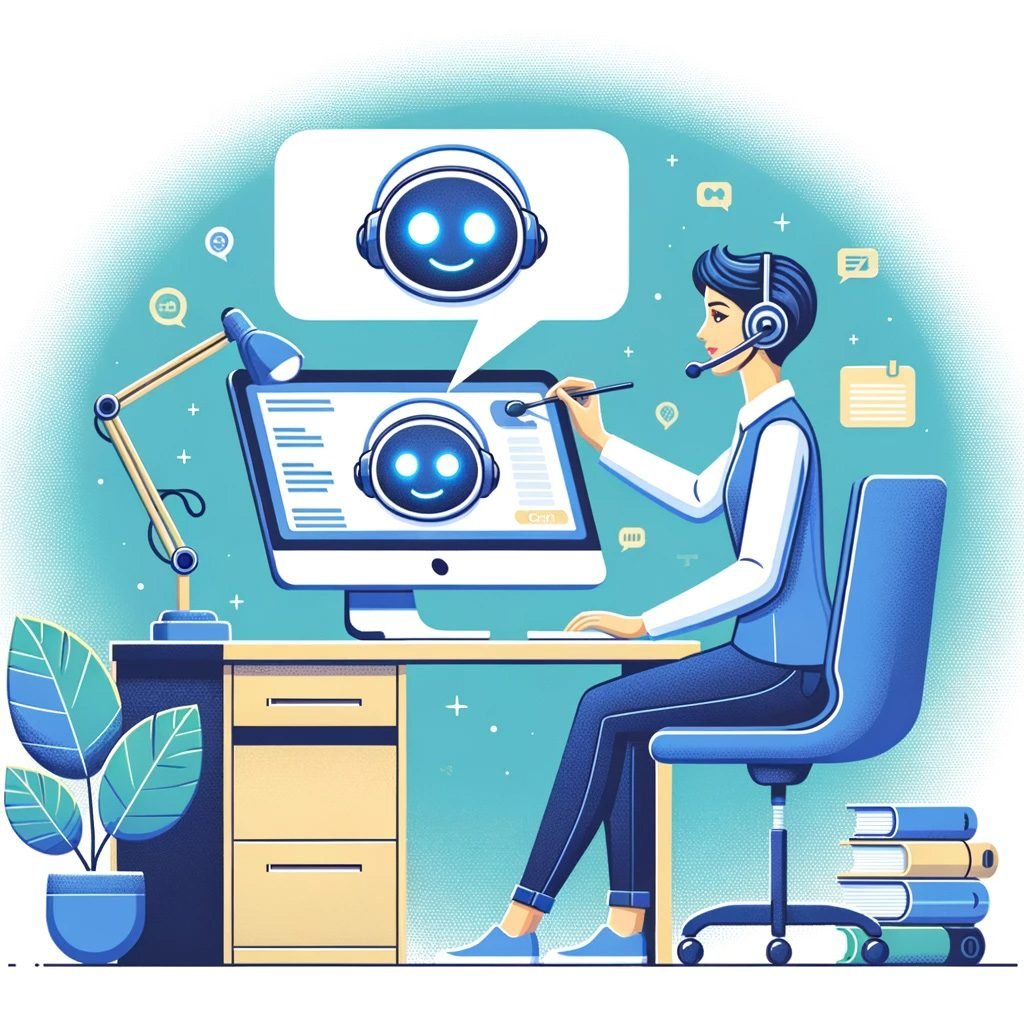
Conclusion
In the ever-evolving landscape of customer service, the integration of AI and chatbots like ChatGPT stands as a testament to the power of technology in enhancing human interactions. While the digital age has brought forth numerous tools and platforms, the transformative power of a well-trained ChatGPT is unparalleled. It’s not just about automation; it’s about elevating the entire customer experience.
A well-trained ChatGPT can anticipate customer needs, offer personalized solutions, and even empathize in ways that were once thought to be the exclusive domain of human agents. It bridges the gap between the efficiency of technology and the warmth of human interaction. However, like any tool, its efficacy is determined by how it’s used. Training becomes the linchpin in this equation. A ChatGPT that’s trained with real-world scenarios, continuously updated based on feedback, and fine-tuned for empathy can truly be a game-changer.
For businesses, this isn’t just a technological upgrade; it’s a strategic move. It’s about staying ahead of the curve, meeting customers where they are, and offering them unparalleled support. Investing in training ChatGPT is not just about optimizing a tool; it’s about future-proofing customer service.
As we reflect on the potential of ChatGPT, one thing becomes clear: the future of customer service is not just human or AI; it’s a harmonious blend of both. And for businesses that can strike this balance, the rewards in terms of customer loyalty, satisfaction, and even revenue can be immense. So, whether you’re a startup or an established enterprise, whether you’re in WordPress web development or e-commerce, the message is clear: invest in training, harness the power of ChatGPT, and watch your customer service soar to new heights.
The journey of integrating and training ChatGPT in customer service is as unique as the businesses that embark on it. Each experience, each challenge, and each success story adds a new dimension to our collective understanding of this powerful tool.
Have you tried training ChatGPT for your business? We’d love to hear about your experiences, the challenges you faced, and the milestones you achieved. Your insights could be the guiding light for many others on a similar journey.
For businesses that haven’t yet explored the potential of ChatGPT, there’s no better time than now. Dive into the world of AI-driven customer service, harness the capabilities of ChatGPT, and elevate your customer interactions to levels you’ve never imagined. Whether you’re in the realm of WordPress business websites or branching out into new digital territories, the potential is immense.
Take the leap, explore ChatGPT’s potential, and redefine your customer service experience. The future is here, and it’s waiting for you to shape it!
Additional Resources
For those eager to delve deeper into the world of ChatGPT training and optimization, here are some invaluable resources to guide your journey:
- ChatGPT Official Documentation: An in-depth guide provided by OpenAI, covering everything from the basics to advanced training techniques. A must-read for anyone serious about integrating ChatGPT into their customer service operations.
- Rizve Joarder Web Development Services: While primarily focused on web development, they offer insights into integrating AI tools like ChatGPT into various platforms, especially WordPress.
- Fiverr’s WordPressBoss: A platform where you can find experts who can assist in integrating ChatGPT into your WordPress sites, ensuring seamless customer interactions.
- AI Training Platforms: Websites like Coursera and Udemy offer courses on AI and chatbot training, providing a foundational understanding that can be applied to ChatGPT.
- ChatGPT Community Forums: Engage with a community of ChatGPT enthusiasts. Share experiences, ask questions, and get insights from those who’ve been there and done that.
- AI and Customer Service Blogs: Stay updated with the latest trends, techniques, and case studies by following top AI and customer service blogs. They often feature articles on ChatGPT and its applications in various industries.
- Books on AI and Chatbots: For a deep dive, consider reading books dedicated to the subject. Titles like “Chatbots for Customer Service” and “AI-Driven Customer Engagement” can offer comprehensive insights.
Remember, the journey of training ChatGPT for customer service is continuous. As technology evolves and customer expectations shift, staying updated with the latest resources will ensure you’re always ahead of the curve.
FAQ
- Why is training essential for a ChatGPT chatbot to excel in customer service?
- Understanding the significance of tailored training to meet specific customer service needs.
- What are the initial steps to take when training ChatGPT for customer service applications?
- A brief overview of setting up the environment, data collection, and defining objectives.
- How can businesses use real customer queries to train ChatGPT more effectively?
- The advantages of using actual customer interactions to make the chatbot more responsive and accurate.
- What techniques can be employed to make ChatGPT a problem-solving chatbot?
- Strategies like scenario-based training, role-playing, and iterative feedback loops.
- How often should businesses update the training data for ChatGPT in a customer service role?
- The importance of regular updates to keep the chatbot relevant and efficient.
- Can ChatGPT be trained to handle multiple languages and regional dialects in customer service?
- Insights into multilingual training and accommodating regional nuances.
- How can businesses ensure that ChatGPT escalates unresolved issues to human agents effectively?
- Training methods to recognize complex issues and seamlessly transition to human support.
- What are the challenges in training ChatGPT for customer service, and how can they be mitigated?
- Common hurdles like data biases, overfitting, and handling ambiguous queries, with solutions to address them.
- How can businesses measure the effectiveness of a trained ChatGPT in solving customer problems?
- Metrics and KPIs to evaluate the chatbot’s performance and areas of improvement.
- Are there any tools or platforms that can assist in the training process of ChatGPT for customer service?
- Recommendations on software and platforms that facilitate the training and evaluation of chatbots in a customer service role.
